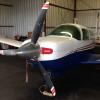ATC asking about GPS
-
Members Online
- Smiles201
- bixmooney
- takair
- FoxMike
- TCC
- tailgator
- Fly Boomer
- Scott Ashton
- FlyLateNLife
- Marc_B
- BrentS
- ArtVandelay
- aviatoreb
- toto
- Guilly
- AndreiC
- hammdo
- Eric_M20J
- Alan Fox
- Vintagevalves
- DCarlton
- Shiroyuki
- GeneralT001
- prillayo03
- Blaze
- FlyngDude
- eman1200
- JustusSJ
- Crawfish
- jetdriven
- KTM105
- M20S Driver
- outermarker
- 201er
- Jsno
- A64Pilot
- mike_elliott


Recommended Posts
Join the conversation
You can post now and register later. If you have an account, sign in now to post with your account.